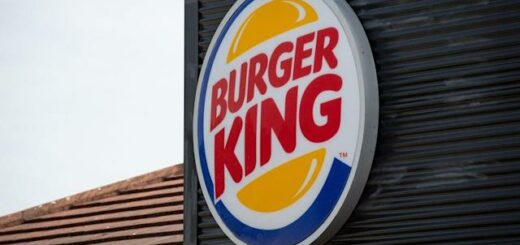Walmart extends its direct-to-fridge InHome conveyance service to 30 million homes

- Walmart declared Wednesday that it will extend the accessibility of its InHome conveyance administration from 6,000,000 to 30 million families.
- InHome permits workers wearing cameras to enter a client’s home to convey food and different buys or to get returns, in any event, when the client isn’t there.
- Walmart likewise said it will enlist 3,000 workers to help the assistance’s extension.
Walmart Inc said on Tuesday it intends to employ in excess of 3,000 U.S. conveyance drivers and work out an armada of all-electric conveyance vans to help its “in-home” basic food item conveyance administration, its most recent interest in its last-mile satisfaction organization.
Walmart is growing assistance will convey your everyday food items straightforwardly to your fridge, the organization reported today. First sent off in fall 2019, Walmart’s InHome conveyance administration, as it’s called, permits clients to put in staple requests on the web, then, at that point, accept their conveyances by having a Walmart partner enter their home via a brilliant lock. The assistance was at first tried in a little small bunch of business sectors, including Kansas City, Pittsburgh and Vero Beach, and is presently accessible to 6 million families across the U.S. after further send-offs in Northwest Arkansas, Atlanta, Phoenix, and D.C. Today, Walmart says it intends to extend InHome conveyance all the more comprehensively, determined to arrive at 30 million U.S. homes before the year’s over.
Walmart is making a major bet on clients’ longing for expanded comfort, declaring Wednesday that its InHome conveyance administration will extend accessibility from 6,000,000 to 30 million families, remembering for urban communities, for example, in Los Angeles and Chicago, before the current year’s over.
Bentonville, Arkansas-based Walmart in 2019 sent off its InHome conveyance administration through which laborers convey basic foods straightforwardly into customers’ homes, in some cases putting things straight into kitchens or carport coolers when individuals are not in the house.
This will incorporate impending send-offs in significant business sectors like Dallas, Nashville, L.A., Chicago, Houston, Indianapolis, and others.
InHome permits Walmart workers wearing cameras to enter a client’s home to convey food and different buys or to get returns, in any event, when the client isn’t there.
“Presently you have this extreme accommodation where you return home, the fridge is restocked and different things like computer games, apparel, toiletries and other non-perishables are on the ledge,” Tom Ward, senior VP of last mile conveyance at Walmart, told. “We will likewise get your return assuming you start that interaction on the application we will snatch the thing the following day and will deal with that return for you.”
Dreading COVID-19, numerous customers have gone to online staple conveyance since the beginning of the pandemic, starting forceful contest in the business from any semblance of Amazon.com Inc’s Whole Foods, Instacart and Uber Technologies Inc.
As a piece of this development, Walmart plans to employ in excess of 3,000 conveyance drivers throughout the year. It will likewise work out an armada of 100 percent all-electric conveyance vans which will be utilized to make the conveyances, while at the same time promoting the help in the areas being served.
was given admittance to a show of the InHome administration in Glendale, Arizona. The interaction started with the conveyance driver connecting a wearable camera. Each conveyance can be seen live or as a recording on the Walmart App. The worker equipped in defensive covers over their shoes then, at that point, got to a brilliant lock from Walmart at the front way to enter the home and conveyed the arranged things inside in plastic canisters. The conveyance individual set things in the cooler and on the counter as mentioned and cleaned down all surfaces with a disinfecting wipe prior to leaving.
Walmart has tested for a really long time with last-mile conveyance choices. In 2017, for example, Walmart set up a program through which its own store workers would bring on the web orders straightforwardly to customers’ homes in the wake of finishing their standard movements on deals floors.
The InHome administration itself is $19.95 each month, which makes it more proper for clients who work outside the home during the day or who travel, and need their basic foods set aside while they’re out.
“I’ve involved it for the last month and a half and have been exceptionally fulfilled,” Erin Amini, a client in Glendale told. “We presently don’t need to go to the store. We have a solid sense of security with Covid. They wear covers, they clean and they are likewise continually recording so we realize what’s going on while they are in our home.”
In August, in front of the U.S. Christmas shopping season, Walmart sent off a last-mile conveyance administration for different vendors. Last year, it additionally tried organization marked “last-mile” conveyance vans, taking a page from Amazon’s playbook as online interest pressures United Parcel Service, FedEx Corp and the U.S. Postal Service.
However it might appear to be odd to consider having a conveyance individual enter your home to stock your cooler, the InHome administration tends to a significant purchaser protest with online basic food item conveyance — that you must be at home (or possibly be going home soon) to take care of your cold and frozen food after your request is left at the doorstep.
Walmart is growing InHome as the lines are obscuring between what Insider Intelligence gauges as a $93 billion staple conveyance market and what Coresight Research stakes as up to a $25 billion speedy business market, which incorporates any semblance of DoorDash. Walmart’s InHome administration costs $19.95 each month with no extra expenses, and it’s essential for a developing pattern of “conveyance as an assistance.”
Administrations like Shipt and Instacart — top Walmart staple contenders — don’t offer an answer for keeping clients’ chilly things protected past perhaps twofold sacking things, at the customer’s circumspection. The customers for these administrations just utilize the paper or plastic sacks given by the store at checkout, and there’s no framework for trading protected packs or boxes at the hour of conveyance or utilizing a type of protected cooler at the client’s home. That implies clients will once in a while get back to observe their frozen yogurt softened or other cold things ruined, assuming left out for a really long time on a hot day. Confounding issues further is that the administrations don’t dependably convey at the time you indicated, which means the conveyances could show up sooner than expected or past time to be advantageous.
Disclaimer: The views, suggestions, and opinions expressed here are the sole responsibility of the experts. No STOCKS MONO journalist was involved in the writing and production of this article.



